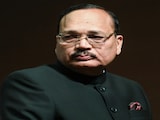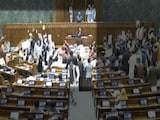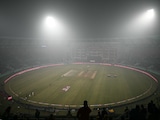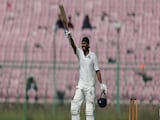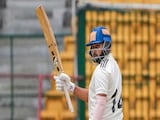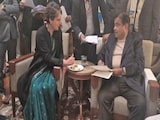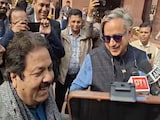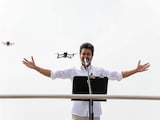The dominant image of the Congress's 'Black Friday' anti-price rise protests was of black-clad Priyanka Gandhi Vadra sitting on the road, surrounded by a police posse. Before that, she was seen marching energetically, then clambering over police barricades, being forcibly pushed back by women cops, and finally being dragged away into a waiting van. Rahul Gandhi was also seen raising slogans and being strong-armed into police custody.
The reason these images are striking is because the Gandhis are usually seen leading a sheltered existence, surrounded by special security, travelling in heavily-guarded limousines or appearing in public ringed by protective party faithful. Their preferred mode of agitation is usually a tweet or two, or gentle dialogue with academics based overseas. So when the Gandhis actually make a break from their VIP cocoon and step into street agitation, or are seen bearing the brunt of police action, the images immediately make news.
There's great power in the right image. Long before Priyanka, there was Indira Gandhi who, back in October 1977, when she was arrested, transformed it into excellent theatre. Before her arrest, she first made sure press photographers were present when the police arrived at her door. She then stalked out and insisted on being handcuffed, crying "Lagao hathkadi, mujhe hathkadi lagao" (put on the handcuffs). Earlier that year, she had journeyed through a major storm to the remote Belchi village in Bihar. Seated atop an elephant ,she swayed and lurched across a swollen river in driving rain. Watching this feat of endurance by a 60-year-old Indira, even news -hardened photographers had shouted "Indira Gandhi-ji ki jai.'
Stretching back to the pre-Independence time, in 1927, Jawaharlal Nehru was ferociously beaten by a British mounted police officer, who charged his horse into a Lucknow procession that Nehru was leading. The Englishman landed several blows on Jawaharlal's back and neck with a long baton, but Nehru remained standing. Mahatma Gandhi's epic 1930 Dandi March came after sustained campaigns of Satyagraha and Non-Cooperation. The Dandi March was not a one-day event.
This then is the key to the process that builds a leader and spurs public mobilisation: sustained and constant street action that identifies with people and does not suddenly stop or constantly retreat or keep disappearing from view. In 2020, Priyanka was detained at Hathras when she went to meet the family of the Hathras rape victim; then in 2021, she was placed under house arrest in Sitapur when she was on her way to Lakhimpur Kheri where farmers had been run over. Yet, the Congress was unable to make any mark whatsoever in Uttar Pradesh in this year's election, performing so badly that it lost its deposit in over 90 per cent seats. Big bang protests which are simply one-day events don't work. Engaging in a few hours of high-voltage action, followed by an equally sudden disappearance from the scene, followed by months of absence, leave zero impact on the public mind.
Protests can't be one-day events or an exercise in one-day optics. Mamata Banerjee fought the Left for decades on the street. She never gave up. She faced lathis, her skull was cracked open, she appeared in public with her head bandaged, but she kept on tilting at the mighty Left Front day after day. Thus, when the Singur and Nandigram protests began, she possessed the credibility to take the leading role, already identified as she was with protest against Left rule. Similarly, the trade union leader George Fernandes was associated with years of street campaigns and was a consistent symbol of mass protest, so that when he was arrested in 1974 after the Rail Roko protest, the image of George in chains holding up his fists became an impactful rallying point for protestors.
At the moment, the charge against the Congress is that the party is only acting for self-preservation to block the Enforcement Directorate investigations against the Gandhis. Most of the Congress's campaigns are taking place on Twitter. Twitter trends and hashtags provide the illusion of mass mobilisation because it's easy to get fooled about public response to viral tweets and widely-shared videos. But in actuality, Twitter is an echo chamber and does not reach the masses or make any real impact. The Congress seems to lack the appetite for street protests.
The party also lacks the organisational depth and breadth -as the Left had in the 70s - to keep agitating across the country for real issues. Home Minister Amit Shah's statement that Congress's Friday protests somehow reveal a disparagement for Modi's Ram Mandir Shilanyas is patently absurd and ridiculous: the exact date of that mandir ritual is hardly branded enough in public memory to warrant a country-wide campaign.
What the Congress needs to convince the public about is whether it can actually connect with the many pockets of restiveness that are today present across the country. Are the Congress and Gandhis going to remain restricted to the small Lutyens zone in Delhi for their sporadic outbursts, or will they be able to reach out to groups across India? Beyond the price rise agitation, can the Congress go to parts where there are grievances about jobs or access to basics, or the grievances of students or jobless workers, and mobilise people and build up movements?
This requires sustained work on the ground. So far, the Gandhis or the Congress have not shown the necessary stamina. In 2011, Rahul Gandhi visited Bhatta Parsaul to join farmers protesting land acquisition, but the Gandhi scion rapidly vanished from view and has not really made land agitations or kisan andolans his chosen mission.
The Congress today faces near-extinction. The only way it can recover is on the street. Leaders are born once they have faced police lathis, prison terms and the might of the establishment. State power can only be met by people power, not by slogans or by tweets. The Congress will have to become what it was once 75 years ago, an effective weapon of resistance against the government machine.
This can't happen with episodic, stop-start, shoot-and-scoot politics. It can only happen if the Congress becomes a tireless watchdog on the street, day after day, year after year. Can Priyanka and Rahul Gandhi learn from Mamata Banerjee or from the formidable kisan andolan of 2020-2021? The days of entitlement politics are well and truly over.
(The writer is senior journalist and author of two biographies on Indira Gandhi and Atal Bihari Vajpayee.)
Disclaimer: These are the personal opinions of the author.
